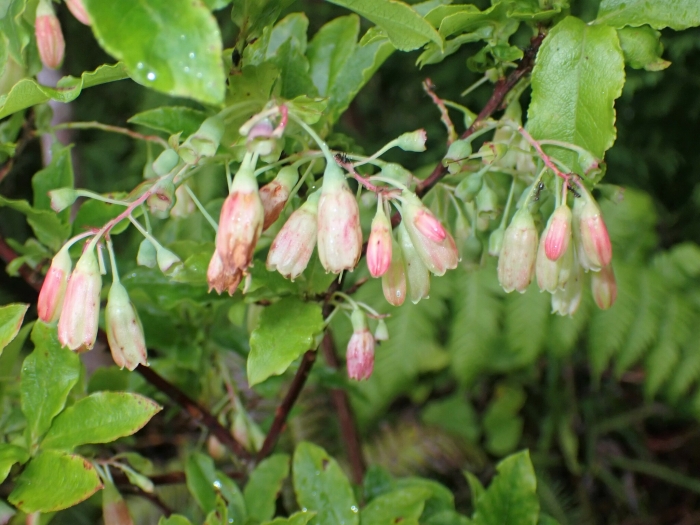Azores Blueberry
(Vaccinium cylindraceum)
Azores Blueberry (Vaccinium cylindraceum)
/
/

Louis Imbeau
CC BY 4.0
Image By:
Louis Imbeau
Recorded By:
Copyright:
CC BY 4.0
Copyright Notice:
Photo by: Louis Imbeau | License Type: CC BY 4.0 | License URL: http://creativecommons.org/licenses/by/4.0/ | Rights Holder: Louis Imbeau | Publisher: iNaturalist | Date Created: 2023-07-15T10:14:07-07:00 |

























Estimated Native Range
Summary
Vaccinium cylindraceum, commonly known as the Azores blueberry, is a semi-deciduous shrub endemic to the cloud forests and volcanic slopes of the Azores. It can grow up to 10 feet tall and is characterized by its dense, bushy form. The shrub produces clusters of trumpet-shaped, pinkish-white flowers that are followed by black, juicy fruits resembling blueberries. Flowering typically occurs in the late spring to early summer, and the fruits are both ornamental and edible. The Azores blueberry is particularly noted for its adaptability to high elevations, thriving between 1,247-4,593 feet.
In cultivation, the Azores blueberry is valued for its attractive flowers, edible fruits, and as a plant that can add interest to acidic soil gardens. It has earned the Royal Horticultural Society’s Award of Garden Merit, indicating its excellence for garden use. This shrub is suitable for border planting, woodland gardens, and as a naturalizing element in larger landscapes. It requires acidic, well-drained soil and benefits from consistent moisture without waterlogging. While it can tolerate partial shade, it will produce the best fruiting in full sun. Gardeners should be aware that, like other Vaccinium species, it may be susceptible to pests such as fruitworms and diseases like powdery mildew.CC BY-SA 4.0
In cultivation, the Azores blueberry is valued for its attractive flowers, edible fruits, and as a plant that can add interest to acidic soil gardens. It has earned the Royal Horticultural Society’s Award of Garden Merit, indicating its excellence for garden use. This shrub is suitable for border planting, woodland gardens, and as a naturalizing element in larger landscapes. It requires acidic, well-drained soil and benefits from consistent moisture without waterlogging. While it can tolerate partial shade, it will produce the best fruiting in full sun. Gardeners should be aware that, like other Vaccinium species, it may be susceptible to pests such as fruitworms and diseases like powdery mildew.CC BY-SA 4.0
Plant Description
- Plant Type: Shrub
- Height: 3-6 feet
- Width: 2-4 feet
- Growth Rate: Slow
- Flower Color: Pink, Red
- Flowering Season: Spring
- Leaf Retention: Semi-deciduous
Growth Requirements
- Sun: Full Sun, Part Shade
- Water: Medium
- Drainage: Medium
Common Uses
Bird Garden, Butterfly Garden, Edible*Disclaimer: Easyscape's listed plant edibility is for informational use. Always verify the safety and proper identification of any plant before consumption., Hedges, Low Maintenance, Potted Plant
Natural Habitat
Cloud forests and volcanic slopes of the Azores
Other Names
Common Names: Madeira Blueberry
Scientific Names: , Vaccinium cylindraceum, Vaccinium longiflorum, Vaccinium padifolium, Vaccinium padifolium,
GBIF Accepted Name: